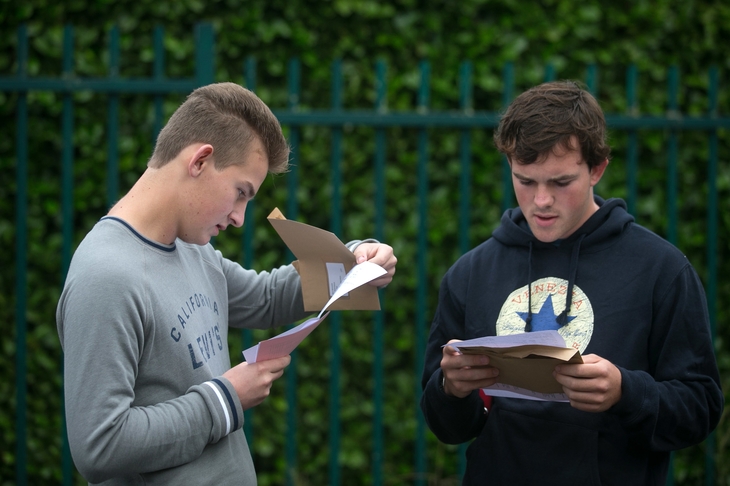Despite the numerous photos doing the rounds of girls celebrating their exam results today, one of the main headlines from A-Level results day is the news that boys are outperforming girls in the highest grades of A*s and As. This is the second year that boys have done better than the girls (and just by 0.4 percentage points, mind).
However, when it comes to the bigger picture things aren’t looking up for boys just yet. The gender gap in academic achievement has only been getting bigger in recent years, though its rate is slowing. Mary Curnock Cook, educationalist and former head of UCAS, tells Coffee House Shots that today’s results show that girls are 40pc more likely to embark on higher education than boys:
‘Of all the A-Level entries that were reported today, 55pc of them were female, and therefore 45pc of them male. That means that there were 81,000 more A-Level entries from girls than there were from boys. And if you divide by three, figuring that most people do three A-Levels, that’s 27,000 fewer males. That’s almost exactly the gap that we see today in the 18-year-old young men placed in universities compared to young women.’
Mary Curnock Cook traces the causes of this trend directly back to earlier stages in secondary education – girls start to take the lead as early on as primary education:
‘You have girls doing better than boys at GCSEs and then more of them go on to do A-Levels, and then hey-presto, more of them go on to university afterwards.’
So what can be done about this? Policymakers seem loath to touch this political hot potato – it’s hardly fashionable to talk about male privilege in the age of MeToo and gender pay gaps. But it should be fine to accept that in various contexts, the balance between the sexes is different. Unless politicians break down this trend head on, we could be seeing a very different workplace gender gap in the future.
Hear Mary Curnock Cook speak to Fraser Nelson and Katy Balls about what we learn from today’s A-Level results.







Comments